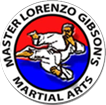A MEDITATION PRACTICE (muk yum)
Meditation combines both relaxation and concentration. It is practiced to help the mind become calm and focused. A calm, focused mind is much more capable than one which is frantic and racing. Much of the time we are busy planning, fretting, remembering, replaying, and arguing in our minds. Rarely do we fully experience the present moment. Meditation helps bring the mind into the present so that we can be fully aware. There are many approaches to meditation and one of the simplest is controlling one’s breath. Although many postures may be used for meditation, the one we normally use is seated, cross legged with the hands facing upward and resting on the knees. The lower back should be slightly arched and the chin slightly tucked so that the spine forms a straight line all the way from the sit bones to the top of the skull. Imagine a string pulling up from the crown of the head. The mouth is closed and the tongue is relaxed at the roof of the mouth. The belly is soft, the eyes closed. Breathe slowly and quietly through the nose, first filling the abdomen (below the navel), then the lungs. Try to make the inhale and exhale the same in length. If the mind begins to drift, gently bring it back to focus on the breath. Be patient and persistent, results are never immediate. There are many other techniques for advanced meditation. After meditation, gradually awaken the body by gently rotating the neck, wrists and ankles to restore circulation. Meditation is not recommended if you are emotionally upset, exceptionally tired, or under the influence of alcohol.


